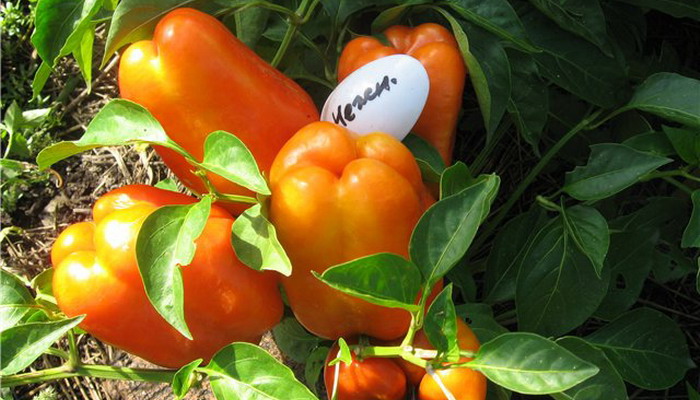 The taste of sweet southern pepper captivated not only the inhabitants of the area where it comes from, but also those who live in colder places. Of course, they were faced with a not so easy task to cultivate this culture in completely unfamiliar, alien conditions. By the method of samples, the farmers of Siberia and the Urals discovered the variety of pepper "Tenderness", which easily takes root in this territory.
The taste of sweet southern pepper captivated not only the inhabitants of the area where it comes from, but also those who live in colder places. Of course, they were faced with a not so easy task to cultivate this culture in completely unfamiliar, alien conditions. By the method of samples, the farmers of Siberia and the Urals discovered the variety of pepper "Tenderness", which easily takes root in this territory.
Content
About grade
The variety of pepper "Tenderness" is a vegetable that has been tested by more than one generation of summer residents. It was included in the GOST register in the 80s of the last century. Gardeners and summer residents prefer it for good survival to any soil, frost resistance and active resistance to diseases and various microorganisms that cause harm to plants.
Pepper fruits with a delicate and thin skin have a pyramidal shape, slightly elongated. They are very juicy, fleshy, thanks to the thickness of their walls, which reaches 8mm. The weight of one pepper varies from 90 to 115 grams. Thanks to his qualities, he became so popular among farmers. According to reviews, this pepper is also the best for use in cooking. It is perfectly stuffed and does not deform during the heat treatment. Pepper gives canned salads a rich taste and a rich consistency.
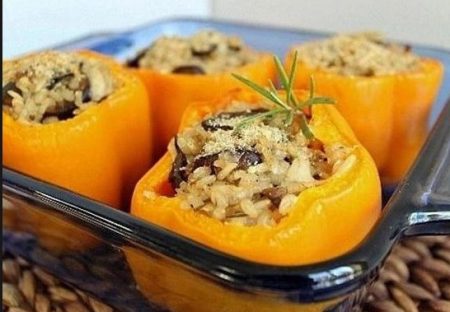
But, of course, the use of fresh pepper, rich in nature with various vitamins and minerals, will bring more benefits. Its qualities do not disappear even after drying under the summer rays of the sun.
Natural benefits of tenderness pepper.
Sweet pepper is a very healthy crop. It contains a large amount of vitamin C, so eating pepper will help the body stay young, healthy and full of strength. Pepper accelerates metabolism, normalizes the central nervous system, relieves mental stress and even relieves depression. The constant use of pepper lowers cholesterol and is the prevention of atherosclerosis. Pepper is very useful for people with high blood pressure and diabetes.
The weaker sex will be pleased with the fact that it relates to dietary products: low-calorie, but at the same time nutritious.
It includes:
- 92.0% of water;
- 1.3% of proteins;
- 4.9% - carbohydrates;
- 1.7% - fiber;
- 0.1% fat.
Useful components:
Vitamins C, A, E, B3, B5, B6; as well as trace elements - Mg, Ca, K, Na, P.
Culture
Pepper "Tenderness" is grown by the seedling method, since it should be planted already at the end of winter, and the soil is not yet ready.
Seedlings
Before undertaking seed planting, they should be well sorted and disinfected in a light solution of potassium permanganate (at least 20 minutes). After that, put them on a damp cloth and allow the seeds to germinate under these conditions. In 15-17 days you can work with them. Some gardeners also soak seeds in stimulants, but lovers of natural products do without this last resort.
For planting seeds, prepare separate cups filled with nutrient soil. The soil should be well loosened so that it is saturated with oxygen. They feed seedlings with Kemira Lux fertilizer. Seedlings can also be slightly hardened. Put under an open window at first for five minutes, then increase the time to 20 minutes.
Seedlings have their own deadlines: she should live in glasses for about 3 months. In warmer regions, you can transplant already in early May, in colder ones, it is best to do this in early June.
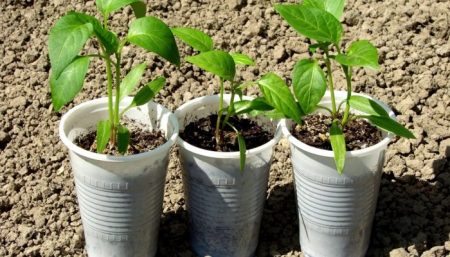
The main thing is to wait out all the frosts.Despite the frost resistance of the variety, young shoots are not yet ready for weather tests.
Bedding
“Tenderness” pepper is planted in greenhouse or in greenhouse conditions, after all frosts. Before planting, you should thoroughly clean the soil, loosen the soil, which should be heated to 15 gr. Pepper "Tenderness", although it is called frost-resistant, it has nothing to do with seedlings.
It is strictly forbidden to plant Tenderness pepper (like any other pepper) in the place where nightshade crops were grown. Soil must be mixed with sand, humus, manure. Each individual hole is dug at a distance of 40 cm. Planted so that the leaves are not located too high from the ground, a maximum of 2 cm, then watered.
Plant care
Seedlings adapt to new conditions in about 10 days. Be sure to cover them with a film. If the region is warm and the weather has already improved, you can let them “breathe” fresh air during the day, but hide again at night. During this period, they do not require abundant watering, just sleg can moisten the soil near the sprouts. It is best to take water heated to 30 degrees, and after watering, loosen the soil to saturate it with oxygen.
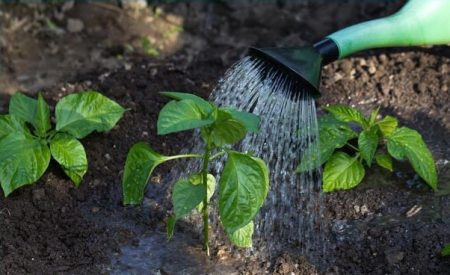
The culture requires top dressing, for this you can use fertilizer of the Korovyak mineral type, which is bred 1/10. Other top dressings are also used. For example, in the early period, plants are fertilized with nitrogen subcorticals, and potassium-phosphorus fertilizers are already used during the ripening of buds. Remember to strictly follow the instructions on the packaging. Overfeeding plants is no less harmful than underfeeding them.
To avoid obvious gardening of bushes, it is necessary to cut the lower young leaves. This will enable the bush to bear more fruit. Upon reaching a height of 30 cm, the top is slightly cut off.
In warm regions, peppers have time to ripen to red. In the northern regions, it is best to shoot them green, put them in a dark and warm place for further maturation. In this case, the place should be very well ventilated.
Disease prevention
Pepper "Tenderness", of course, is considered the most resistant to various diseases, but it also needs special treatment. The most common diseases are:
- Phytophthora / late blight;
- Verticillosis (caused by fungi of the genus Verticillium);
- White rot.
These diseases can only be avoided by prevention:
- thoroughly prepare the land for new plantings in the fall: completely remove, loosen;
- select seeds before using them, disinfect them;
- Do not plant other crops nearby;
- weed the ground from the first week of the appearance of sprouts in it;
- never pour cold water;
- to process / spray the foliage of the bush with solutions of wormwood or celandine;
- use wood ash (according to the instructions) as a fertilizer;
- remove affected foliage;
- take good care of and notice signs of disease in a timely manner.
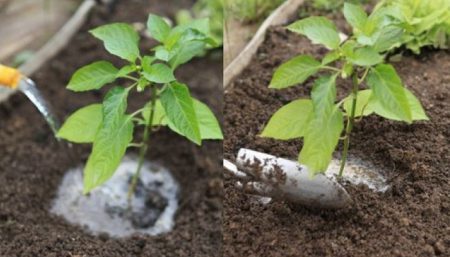
Reviews of gardeners
Pepper "Tenderness" is not only tasty, but also healthy. It easily takes root in any territory and does not require large physical exertion during the care process.
Olesya
“The high productivity of Tenderness pepper struck us the first time. From one bush you can remove up to 30 fruits, both green and red. Since pepper was growing under our noses, of course, the culture was well-groomed, but there were no significant energy costs. ”
Maria
“Very thick walls, fleshy fruit, great for winter spins. When harvesting, it can be stored for a long time in a cool place, which also pleases. "
Oksana
“In Siberia, I took root only in the second year, but I realized my mistakes.Firstly, do not plant it where zucchini previously grew, and secondly, it is necessary to transplant in our area not in May, but in early June, when the ground has already warmed up well. You can harden the grains: put them in the refrigerator for another hour. "
Svetlana
“I love this pepper. It is tender, aromatic, tasty and grows without any special conditions, an important point is the preparation of the soil and care for it so that the disease does not eat the peppers. ”
We also recommend that you find out characteristics of blots.




 Calorie pepper stuffed with meat and rice - BZHU per 100 grams
Calorie pepper stuffed with meat and rice - BZHU per 100 grams Gorky pepper - the best varieties for open ground
Gorky pepper - the best varieties for open ground Hot pepper seeds - the best varieties for open ground and reviews
Hot pepper seeds - the best varieties for open ground and reviews Capsicum tincture for hair - how to use and reviews
Capsicum tincture for hair - how to use and reviews